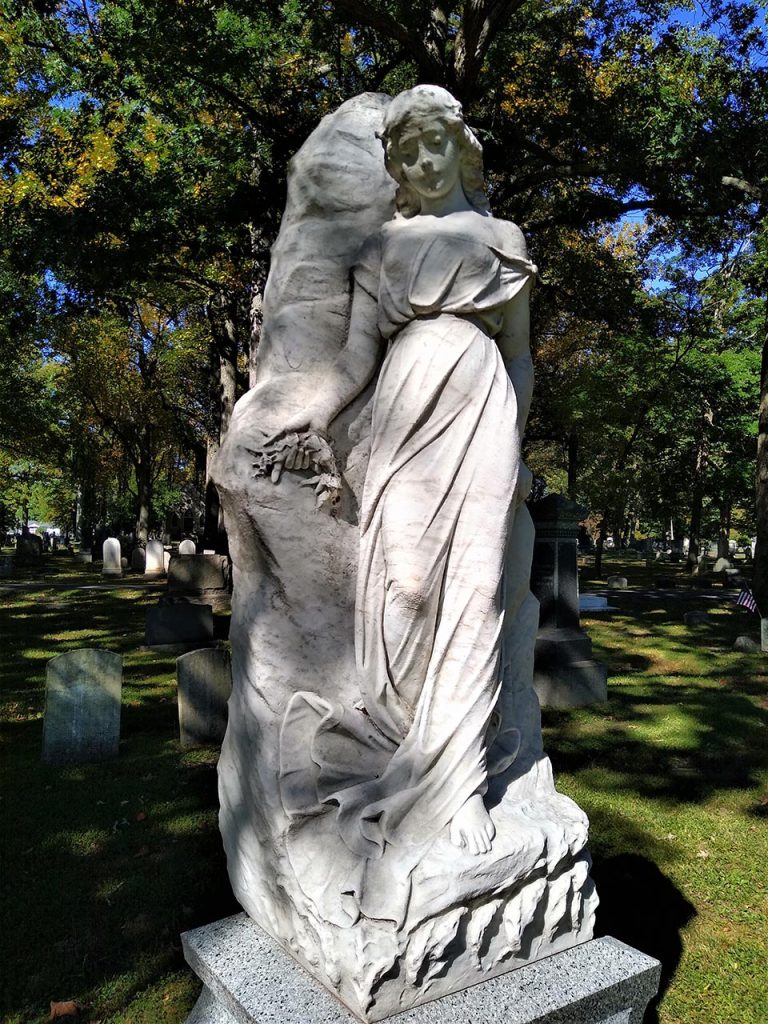Burial Reform…
...in Vineland and the role Riley Adams played in it.

Let’s take a walk back to the 19th century when the fine line between life and death was a lot more visible to most people than it is these days. Medical science as we know it was still in its infancy. Disease claimed lives with regularity. As they did with most aspects of life, the Victorians decreed that while death may have been ever-present, it was going to be structured according to the rules of polite society.
That meant certain traditions had to be followed, especially among the wealthier members of society. However, not everyone agreed with the idea that huge mausoleums or massive statues, along with the attendant funeral pomp was necessary.
Riley M. Adams arrived in Vineland in 1865 after reportedly amassing a fortune while running a hotel in Burlington, Vermont. He became the founder of the Vineland Burial Reform Association, the first organization of its type in America, which wanted to simplify the funeral process. A graduate of the American Literary Scientific and Military Academy of Middletown, Connecticut, Adams was a vibrantly colorful character in a town of colorful characters.
The Burial Reform Association was officially incorporated on March 27, 1882. In addition to Adams, who served as secretary, the founding members included A.C. Cotton as president, Ellen Dickinson as vice president, John Wilcox as assistant secretary and Susan Cornell as treasurer. Like Adams, all of the members were Spiritualists who disagreed with excessive burial practices.
According to the organization’s Constitution: “Real anguish finds no recompense in display, and to sustain it cultures dissimulation.” Members of the Association felt it was immoral to force people to meet arbitrary standards of such artificial display that were “ostentatious and wasteful.”
It is possible that Adams was genuinely concerned with its effect on the working class, like so many Spiritualists were at that time. However, his reasons may have been a bit more personal. Apparently, he reportedly spent most of his fortune on his studies of the afterlife. He kept a “Journal of Spiritual Facts and Other Matters Philosophical” that was a combination of his own thoughts and those of other truth-seekers, started on November 24, 1862. He claimed that Dr. Benjamin Rush, one of the signers of the Declaration of Independence, was his spirit guide.
In the years that followed, Adams spoke in support of his faith at every opportunity. His reason very likely was because, for Adams, the unseen spirits were not always benevolent and he feared for the future of humanity. According to the April 10, 1894, issue of The Daily Times, a New Brunswick newspaper, he maintained a belief that “the spirits surrounded him, accompanied him in his walks, and at his meals he set aside places for them at the table.”
The article continued: “When he imagined himself surrounded by an unusually large number of evil spirits he locked himself in his room and all night sat in the middle of the floor holding a huge club, which he constantly waved back and forth. Another method of guarding himself against his invisible enemies was to saturate his clothes with disinfectants.”
Adams owned several properties on the northwest corner of Plum and Seventh streets. One large red brick house may have later been converted into a Spiritualist venue known as Circle Hall. Interestingly enough, after he died on April 5, 1894, Adams stuck firm to his principles. Or perhaps, he wanted to make sure that no malevolent spirits would find him once he left this world for the next. He was buried at Siloam Cemetery in a specially made wicker basket, without much ceremony at all.









